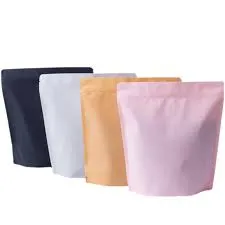- Afrikaans
- Albanian
- Amharic
- Arabic
- Armenian
- Azerbaijani
- Basque
- Belarusian
- Bengali
- Bosnian
- Bulgarian
- Catalan
- Cebuano
- chinese_simplified
- chinese_traditional
- Corsican
- Croatian
- Czech
- Danish
- Dutch
- English
- Esperanto
- Estonian
- Finnish
- French
- Frisian
- Galician
- Georgian
- German
- Greek
- Gujarati
- haitian_creole
- hausa
- hawaiian
- Hebrew
- Hindi
- Miao
- Hungarian
- Icelandic
- igbo
- Indonesian
- irish
- Italian
- Japanese
- Javanese
- Kannada
- kazakh
- Khmer
- Rwandese
- Korean
- Kurdish
- Kyrgyz
- Lao
- Latin
- Latvian
- Lithuanian
- Luxembourgish
- Macedonian
- Malgashi
- Malay
- Malayalam
- Maltese
- Maori
- Marathi
- Mongolian
- Myanmar
- Nepali
- Norwegian
- Norwegian
- Occitan
- Pashto
- Persian
- Polish
- Portuguese
- Punjabi
- Romanian
- Russian
- Samoan
- scottish-gaelic
- Serbian
- Sesotho
- Shona
- Sindhi
- Sinhala
- Slovak
- Slovenian
- Somali
- Spanish
- Sundanese
- Swahili
- Swedish
- Tagalog
- Tajik
- Tamil
- Tatar
- Telugu
- Thai
- Turkish
- Turkmen
- Ukrainian
- Urdu
- Uighur
- Uzbek
- Vietnamese
- Welsh
- Bantu
- Yiddish
- Yoruba
- Zulu
packing milk
The Art and Science of Packing Milk Ensuring Freshness and Safety
Milk is one of the most consumed beverages worldwide, a staple ingredient that forms the backbone of numerous diets. Its journey from pasture to packaging is fascinating, especially when we consider the crucial role that packing plays in maintaining its freshness and safety. In this article, we will explore the various aspects of milk packing, including the methods used, the materials involved, and the significance of proper packaging in preserving the quality of milk.
The Importance of Milk Packaging
Milk is highly perishable due to its unique biochemical composition, which makes it prone to spoilage by bacteria and environmental factors. Therefore, effective milk packaging is essential not only for preventing spoilage but also for ensuring food safety. Proper packaging helps to limit exposure to light and air, both of which can promote spoilage and nutrient degradation. Furthermore, it plays a significant role in extending shelf life, which is critical in meeting consumer demand and minimizing waste.
Methods of Packing Milk
There are several methods used to pack milk, each with its own advantages and considerations. The most common methods include
1. Cartons A widely used method, milk cartons are often made from a combination of paperboard, plastic, and aluminum. They offer excellent protection against light and oxygen, which helps to preserve the milk’s flavor and nutritional value. Cartons are also lightweight and recyclable, making them an environmentally friendly option.
2. Bottles Glass and plastic bottles are also popular choices for milk packaging. Glass bottles are particularly valued for their ability to maintain the milk’s temperature and flavor. Meanwhile, plastic bottles are lightweight and shatter-resistant, offering convenience for consumers. However, they can be less effective at preventing light exposure unless they are opaque.
3. Tetra Pak This innovative packaging solution combines the benefits of carton and bottle technologies. Tetra Pak cartons are aseptic, meaning they can keep milk safe without refrigeration until opened. This method significantly reduces food waste and allows for easier distribution in regions with limited refrigeration facilities.
Materials Used in Milk Packaging
packing milk

The materials selected for milk packaging are crucial in determining the efficacy of preservation. Some common materials include
- Paperboard Often used for cartons, paperboard is lightweight, easy to print on, and made from renewable resources. - Plastic Commonly used in bottles and caps, plastic is versatile and can be engineered for various properties, such as UV protection or durability. - Aluminum Foil Frequently included in carton designs, aluminum provides a barrier against light and oxygen, thus protecting the milk inside.
Challenges in Milk Packaging
While advances in technology have led to improved milk packaging solutions, several challenges remain. For instance, the environmental impact of plastic waste is a significant concern. Many milk producers are now exploring alternatives, such as biodegradable materials or recyclable options, to reduce their ecological footprint.
Moreover, the proper sealing of milk containers is critical to prevent contamination. Any lapse in this area can jeopardize the milk’s safety and quality, potentially leading to foodborne illnesses. Therefore, stringent quality control measures are imperative throughout the packing process to guarantee that every package is hermetically sealed and free from defects.
The Future of Milk Packaging
Innovation continues to drive the evolution of milk packaging. Researchers are exploring smart packaging technologies that can provide real-time information about the milk’s condition, such as its freshness and temperature. Additionally, sustainable practices, including the use of plant-based materials and advances in recycling processes, are becoming increasingly important. Manufacturers are more cognizant of their carbon footprint, leading to the development of packaging that aligns with consumer demand for eco-friendly products.
Conclusion
The process of packing milk is a complex interplay of science, technology, and artistry. From ensuring safety and freshness to exploring sustainable options, the world of milk packaging is continually evolving. As consumers become more aware of the importance of quality and environmental responsibility, the dairy industry must adapt and innovate to meet these expectations. Ultimately, effective milk packaging not only enhances the consumer experience but also contributes to a safer and more sustainable food system.













